- Rubber
- Chemical & Petrochemical Skill Development Council
- RCPSDC
- Ministry of Skill Development and Entrepreneurship
- National Skill Development Corporation
- NSDC
- Saif Mohammad
- skill training
- rubber
- natural rubber
- farmer
- synthetic rubber
RCPSDC Aims To Be A Bridge Between The Government And The Industry
- By Nilesh Wadhwa
- February 26, 2025
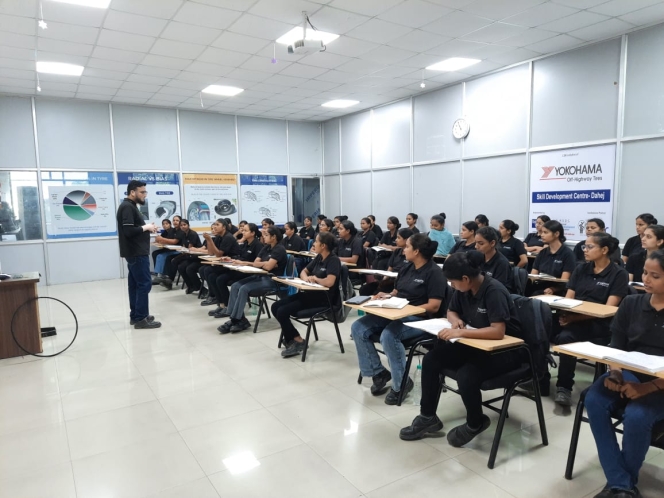
The Rubber, Chemical & Petrochemical Skill Development Council (RCPSDC), under the aegis of the Ministry of Skill Development and Entrepreneurship, set up by the National Skill Development Corporation (NSDC), aims to nurture young talent in the country to improve livelihood opportunities.
The rubber industry in India is facing huge challenges and disruptions, not least due to the shortage of rubber, skilled workforce or the lack of interest among the younger generation in following the footsteps of their predecessors in the natural rubber tapping profession.
But as the proverb goes, ‘every opportunity is a blessing in disguise’, there are stakeholders who are working tirelessly to improve the situation. Among them, Saif Mohammad, CEO of the Rubber, Chemical & Petrochemical Skill Development Council, is optimistic about his organisation’s role in acting as a bridge between the government and the industry.
“A lot of efforts have already been made, and a lot more are ongoing as we speak. We engage with the industry to educate them and actively, proactively seek their feedback on how and what they need, which can be incorporated into our training programmes,” he shared.
As the head of RCPSDC, Mohammad is tasked with driving skill training in the rubber sector by largely complementing the development of qualifications spanning rubber (natural and synthetic) production, rubber product/tyre manufacturing and tyre services and maintenance.
LABOUR SHORTAGE
The development of tyres and other rubber materials is predominantly dependent on rubber tapping, wherein workers make an incision on the tree with a sharp knife, place the collecting cup and repeat the process with subsequent trees. It is estimated that workers carry out this process for hundreds of trees and wait for the cups to be filled with latex. Tapping requires efficient skills to ensure proper incision, so that it does not damage the tree and enables higher extraction of latex.
It may not seem like a very exciting job, given the slow process and subsequently dwindling earnings, which have made it a less lucrative career.
Kerala, once home to the largest rubber tappers in the country, is now facing an acute shortage of skilled workers to continue the profession. Farmers who were earlier involved in the trade are finding it difficult to convince the younger generation to follow in their footsteps.
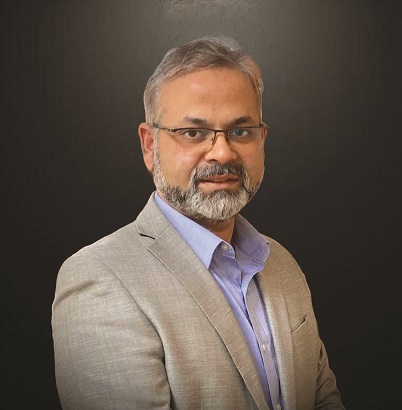 “A good percentage of the current workforce working as rubber tappers are trained by their predecessors and have no formal training. I believe formal technical training is required alongside training on new technologies, which not only helps them increase their yield but also enables alternative revenue streams,” explained Mohammad.
“A good percentage of the current workforce working as rubber tappers are trained by their predecessors and have no formal training. I believe formal technical training is required alongside training on new technologies, which not only helps them increase their yield but also enables alternative revenue streams,” explained Mohammad.
He elaborated that it is not just about rubber tapping; farmers also need to see the business potential in their profession. They could look at intercropping, beekeeping and other revenue streams.
“India is facing a significant crunch in terms of feed on plantations. Workers are migrating for better opportunities and leaving the rubber industry. Many of them, for example in Kerala, are going abroad for better earning prospects,” added Mohammad.
On one hand, there is labour shortage and drop in yield of natural rubber, but on the other hand, the demand for natural rubber globally, including in India, is scaling new heights. This raises the question: if there is high demand, why are rubber tappers not reaping the benefits?
Climate change, natural disasters and the average price of natural rubber being below expectations have been hurting farmers. For instance, the peak price of natural rubber was INR 20,805 per 100 kg in 2011-12; at present, it is INR 18,800 per 100 kg (as of 26 December 2024). This means that farmers’ incomes have not kept up with inflation, pushing them to explore other revenue streams.
Mechanised solutions do exist, but the high acquisition costs, as well as an ageing population hesitant to continue the profession, have resulted in rubber tapping remaining heavily dependent on skilled workers.
RCPSDC’S ROLE
“The Government of India is doing its part. The Rubber Board, for instance, is working in tappable areas, and several programmes are run with RCPSDC for training people who can work on plantations. However, there is also a transition towards synthetic rubber in India,” he shared.
Mohammad explained that the import of synthetic rubber is increasing. Manufacturers in the MSME space are actively forging or finding new technologies to switch from natural rubber to synthetic rubber.
“The government is working to protect and enrich the workforce and natural rubber in the country and would definitely want India to continue with it and ensure it does not fall below a certain threshold. However, a significant influx of synthetic rubber is also happening. There has to be a balance, and there’s no immediate answer or figure to it. In the last five years alone, we might have trained more than 25,000 to 30,000 workers in Tamil Nadu alone,” he elaborated.
Regional training is also being conducted across the country by the association based on curricula aligned with the National Occupational Standards (NOS). The curricula ensure that students acquire specific skills required for a particular job role as per the guidelines laid down by the industry; in this case, rubber.
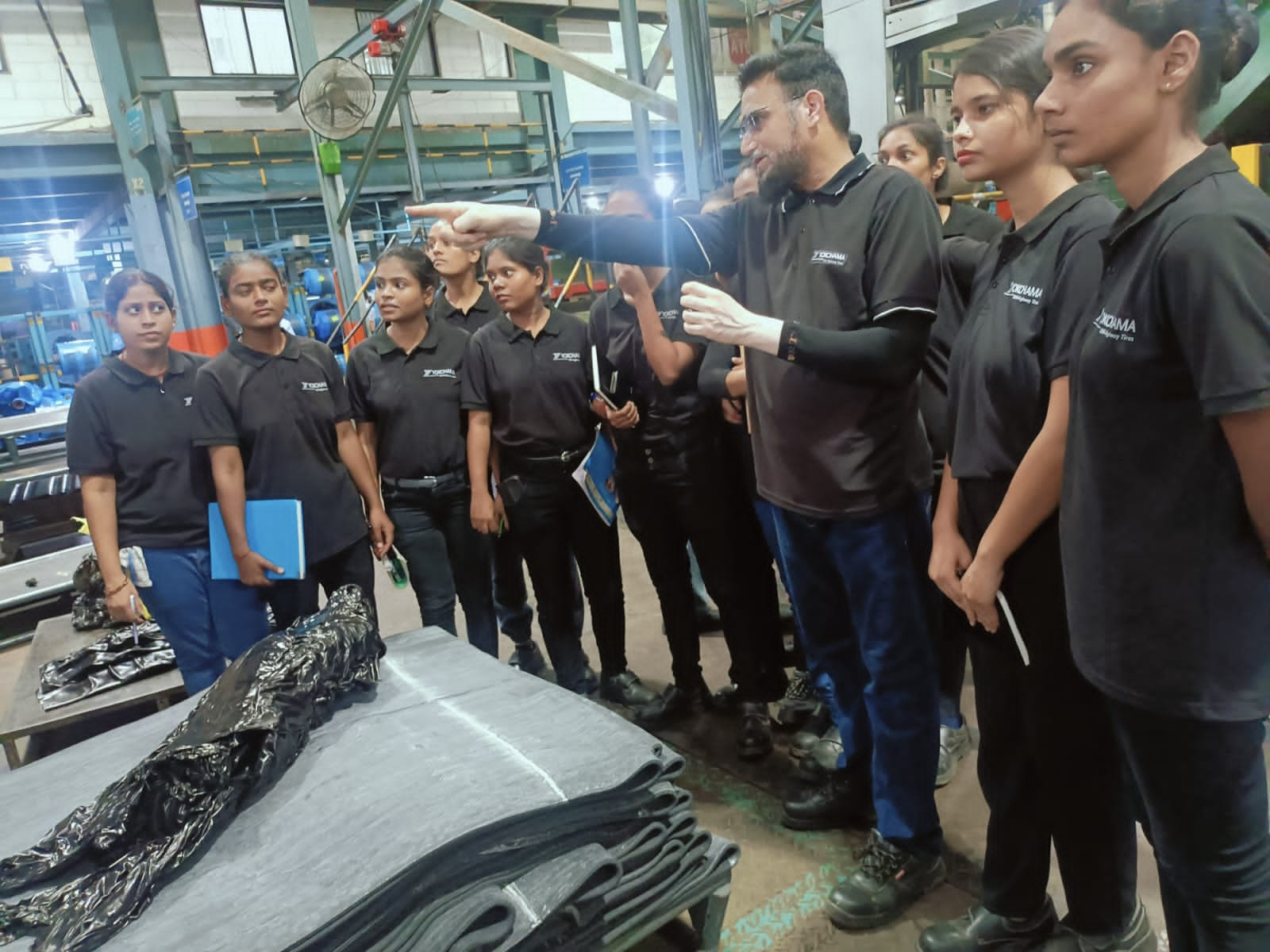
He believes that in addition to skilling/upskilling talents, a lot of vocational training is being conducted through educational institutions such as polytechnics.
“Skill councils like RCPSDC also have courses targeted at people who have not even cleared their secondary education. I think one area we should strengthen our focus on is counselling. It is very important for parents as well as students. Candidates and students are under pressure; they are young and usually opt for things that their parents suggest or that they see happening around them (peer pressure),” said Mohammad.
According to him, while there is a lot of glamour around electronics and engineering, proper education and awareness about career progression opportunities in the rubber, polymer or chemical industries should be prioritised.
“Counselling is very important. This is what needs to be addressed by everyone, including industry mentorship programmes. We need to have alumni from these training programmes who can share success stories with newcomers,” Mohammad added.
The executive believes that people are not recognising the immense opportunity to upscale, increase productivity and enhance efficiency because, in the end, everything boils down to the workforce.
An organisation is only as strong as its weakest link. For instance, on the shop floor, if a person is not trained, that is how strong a company is, he stated. And in the global competitive environment, it is very important to acknowledge that people need training and upskilling to ensure they can contribute not only efficiently but also improve their productivity over time.
“If you are planning to take on these futuristic or emerging roles around sustainability and security, then you need to have trained people, right from the ground level upwards,” concluded Mohammad.
Trelleborg Tires Retains Crown As Brazil's Best Agriculture Tyre
- By TT News
- December 07, 2025

For the second consecutive year, Trelleborg Tires has earned the prestigious title of Best Agriculture Tyre at the 22nd Visão Agro Brazil Awards. This 2025 accolade, presented during a ceremony in Ribeirão Preto, highlights the company’s dedicated role in advancing Brazilian agribusiness through technological leadership and a commitment to sustainable practices. The award was received on behalf of the company by Fábio Metidieri, Agri Sales Director for Yokohama TWS Brasil.
Central to this achievement is Trelleborg’s ongoing innovation, particularly the expansion of its ProgressiveTraction technology within the TM tyre series. This engineering, featured in models from the row-crop TM600 to the high-horsepower TM1000, utilises a dual-edge lug design. The tread operates progressively on the soil to enhance traction, promote self-cleaning and minimise vibration. The resulting benefits include improved operational efficiency, increased tyre durability and superior soil protection, directly supporting farmers’ goals for greater productivity and environmental stewardship.
The company’s deep roots in Brazil, supported by a specialised local team, rigorous field testing and strong manufacturer partnerships, ensure its solutions are finely tuned to regional demands. This local infrastructure allows for responsive technical service and keeps product development closely connected to the practical challenges faced by the agricultural sector. The Visão Agro Brazil Awards, judged by a panel of industry executives and researchers, serve as a recognised benchmark for innovation and performance, making this recognition a significant testament to Trelleborg Tires’ impact on the country’s farming landscape.
Metidieri said, “Receiving this award at such a prestigious event once again reinforces our commitment to Brazilian agriculture. Our goal is to keep advancing in technology and field performance, ensuring that every Trelleborg tyre delivers real value – helping farmers operate more efficiently, sustainably and profitably. This award reflects the trust placed in our team and our products by professionals throughout the sector. It strengthens our commitment to delivering technologies that address local challenges and help shape the future of Brazilian farming.”
Premium Makeover
- By Sharad Matade
- December 05, 2025
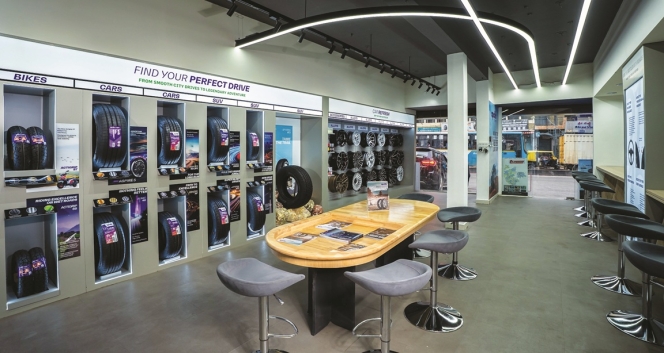
India’s tyre retail industry is undergoing a dramatic makeover, moving far beyond the cluttered workshops and transactional buying of the past. Fuelled by rising demand for premium vehicles, digital-first customers and stronger export momentum, tyre makers are transforming retail spaces into sleek, immersive experience centres. What was once a routine utility purchase is rapidly evolving into a premium, advisory-led mobility experience designed for a new generation of motorists.
India’s tyre retail scene is shifting gears, leaving behind the era of crowded workshops and impersonal counters. In their place, manufacturers are rolling out sleek, thoughtfully designed, tech-powered spaces that echo the luxury of high-end car showrooms. What started as a few bold pilots in big cities has quickly become the go-to playbook for tyre brands eager to win over a new generation of savvy, comfort-loving, digital-first customers.
From urban to rural areas, this transformation reveals a profound change in how Indians approach mobility. Today’s motorists – especially those behind the wheel of SUVs, luxury sedans and electric cars – want more than just a tyre swap. They crave expert advice, a polished atmosphere and a shopping experience that reflects the elegance of their vehicles. Once a utilitarian afterthought, tyre retail is now emerging as a coveted part of the automotive journey.
Strong OEMs and replacement demand in both domestic and export markets underpin the transition.
In FY 24-25, tyre exports from India surged by nine percent year-on-year to INR 251 billion, according to data released by the Ministry of Commerce. With an estimated annual turnover of INR 1 trillion and exports exceeding INR 250 billion, the Indian tyre industry stands out as one of the few manufacturing sectors in the country with a high export-to-turnover ratio.
Though tyre exports have hit a speed bump due to higher US tariffs on select categories of Indian tyres compared to those of competing nations, the long-term prospects for the Indian tyre industry remain strong. According to a joint report by ATMA and PwC India titled ‘Viksit Bharat 2047: Vision and Roadmap for the Indian Tyre Industry’, India’s tyre production volumes are projected to grow nearly fourfold by 2047, while industry revenues are expected to expand almost 12 times to about INR 13 trillion.
Against this backdrop, tyre makers are modernising aggressively to retain customers and build a more profound emotional affinity. The broad shift is visible in how retailers are reinventing their spaces. Lounges with crafted lighting, upholstered seating, minimalist décor and large digital walls are replacing traditional steel racks and dusty counters. Informational murals and heritage display trace decades of tyre innovation, strengthening brand storytelling. Stores increasingly feature curated experience zones where customers can explore tyre technologies, EV-compatible profiles, eco-friendly materials and performance characteristics through visual displays and interactive tools.
A clear sign of this trend is the rise of personalised, advisory-led engagement, replacing the old dependence on technicians. Retailers now profile driving habits, terrain usage, daily distance and vehicle type to recommend tyres customised to each consumer’s pattern. This service-led model is shifting the customer’s mindset from price-first decision-making to long-term value evaluation.
The new premium outlets are designed to deliver a lifestyle-driven, hospitality-grade experience rather than a traditional tyre shop visit. Customers receive personalised mobility recommendations tailored to their vehicle, driving style and needs, supported by smart service innovations like intelligent product selection, quick-fit services and digital scheduling. The space also acts as a community hub for driving enthusiasts, creating a connected ecosystem around the brand. With lounge-style comfort, immersive storytelling and specialised tyre and service packages for luxury and performance vehicles, the outlet blends convenience, premium care and brand-centric offerings into an elevated customer experience.
“Customer experience at the point of sale is another branding exercise poised to change buyer characteristics. Multi-brand outlets often commoditise the tyre-buying experience. That’s why companies are launching exclusive brand outlets with curated customer experiences. Over the next decade, new delivery models will emerge,” said Kavan Mukhtyar, Partner and Leader – Automotive, PwC India.
Apollo Tyres articulates this change as a move towards lifestyle-led retailing. Its new super-premium outlets have been built not as showrooms but as emotionally resonant spaces.
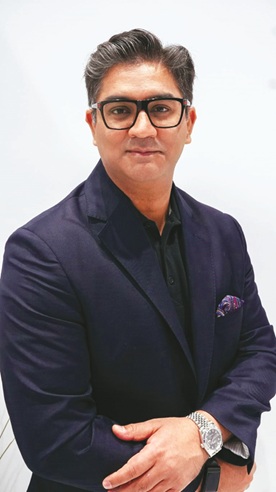
Udyan Ghai, Group Head of Marketing at Apollo Tyres, explained that the company’s new retail architecture is anchored in long-term strategic priorities: “Our move to a lifestyle-led, immersive tyre retail format is driven by our own desire for premiumisation and category leadership. We are looking at elevating tyre retail in India by setting new benchmarks and shifting from commodity selling to a premium, lifestyle-driven experience.”
He said the brand aims to ‘emotionally engage with customers, offer tailored solutions, build a community of driving enthusiasts and tap into premium segments – all while delivering a differentiated, modern retail experience’.
Ghai believes retail ambience plays a decisive role in influencing perception. “A relaxed and well-designed lounge signals comfort, trust and premium value,” he said, adding that such environments elevate tyres from a mundane requirement to a core element of vehicle care and identity.
Digital transparency, he believes, is the second pillar of modern tyre retail. “Digital systems ensure transparency and help demystify tyre selection – tread patterns, speed ratings, durability and fitment. Consumers feel less dependent on a technician’s word and more in control, which boosts their confidence and perceived fairness,” Ghai said.
Customers today are inundated with choices, and digital systems, he said, turn tyre buying into an ‘informed, personalised decision’, comparable to selecting a smartphone, a pair of performance shoes or even a detailed insurance plan. According to Ghai, this new retail model is ‘a strategic investment in the future of mobility retail’, designed to be scalable and to support community-building events, workshops and enthusiast interactions. As India moves towards EVs and connected cars, he said these premium outlets will provide EV-focused tyre expertise, interactive digital tools and personalised recommendations that appeal to younger, digitally savvy motorists.
CEAT shares a similar philosophy. Its national retail revamp focuses heavily on digital immersion, consistent messaging and design-led layouts. Lakshminarayanan B, the company’s Chief Marketing Officer, said the modernised CEAT Shoppes are fundamentally reshaping the category.
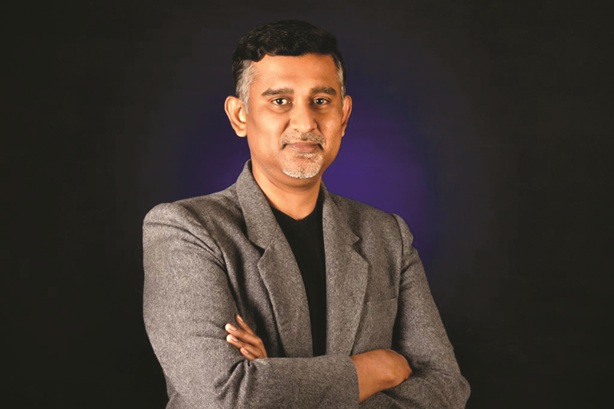
“The modern layouts and digital integration in CEAT Shoppes are revolutionising the tyre-buying experience, making it more experiential and customer-centric,” he said, adding that these updated outlets elevate the experience, build trust through uniform communication and drive decisions by reducing ambiguity around features and value.
Lakshminarayanan highlighted CEAT’s attempt to harmonise customer experience across demographics: “The approach in urban markets through premium stores, product offerings and services is to create access and aspiration for premium customers. The same is replicated in upcountry markets also.”
The CEAT Executive said the company is building for a future where personalisation will be the defining characteristic of tyre retail. “CEAT is focused to drive the future of tyre retail through end-to-end personalisation,” he said.
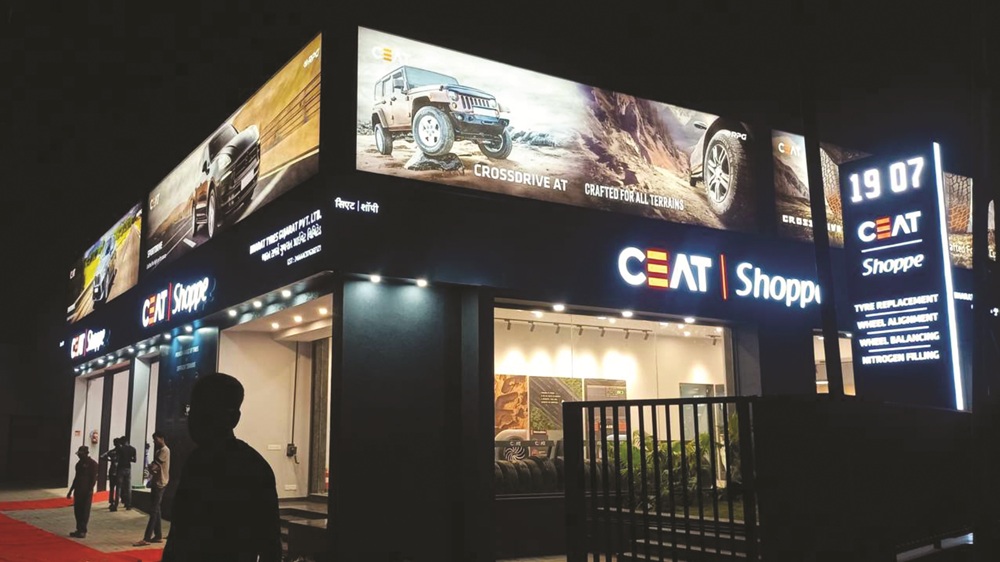
As experiential retail takes hold, service portfolios inside tyre stores are expanding faster than ever. Advanced wheel balancing, laser-driven alignment systems, nitrogen inflation, premium alloy wheel installations, EV-oriented tyre consultations, digital appointment scheduling and real-time tyre-health diagnostics are now standard. Many outlets also provide car detailing, interior cleaning, ceramic coating, PPF application, brake checks, battery inspections and multi-point vehicle health reports, making them full-fledged mobility centres.
Global players have pushed the envelope even further. Michelin’s 25,000-square-foot Experience Store in Nashik features a heritage wall and innovation displays showcasing electric mobility, materials science and environmental responsibility. It houses precision wheel-alignment bays, detailing studios, and accessory galleries. “We are proud to unveil Michelin’s first Experience Centre in India. The sole purpose of this store is to go beyond traditional tyre retail and provide customers with an immersive experience of the brand,” said Shantanu Deshpande, Managing Director of Michelin India.
Continental Tyres is also strengthening India’s premium retail ecosystem through its CPD outlets, which include ambient lounges, diagnostic equipment, premium alloy wheels and digitally enabled guidance. “With our new CPD store in Indore, we bring Continental’s promise of safety, innovation and comfort closer to Madhya Pradesh’s clients,” said Samir Gupta, Managing Director of Continental Tyres India. He added that the brand’s ‘In the Market, For the Market’ approach is central to its retail expansion strategy.
Even in rural markets, tyre retail is becoming more formalised, structured and service-oriented. JK Tyre’s ‘Steel Wheels’ format is targeted at towns with populations under 100,000 and offers standardised layouts, value-added services, best-in-market pricing and instant claim facilities. “Our Rural expansion programme will help us reach the interiors of the real Bharat that is economically vibrant but often underserved. We are not just building retail points; we are also enabling entrepreneurship and access,” said Managing Director Anshuman Singhania.
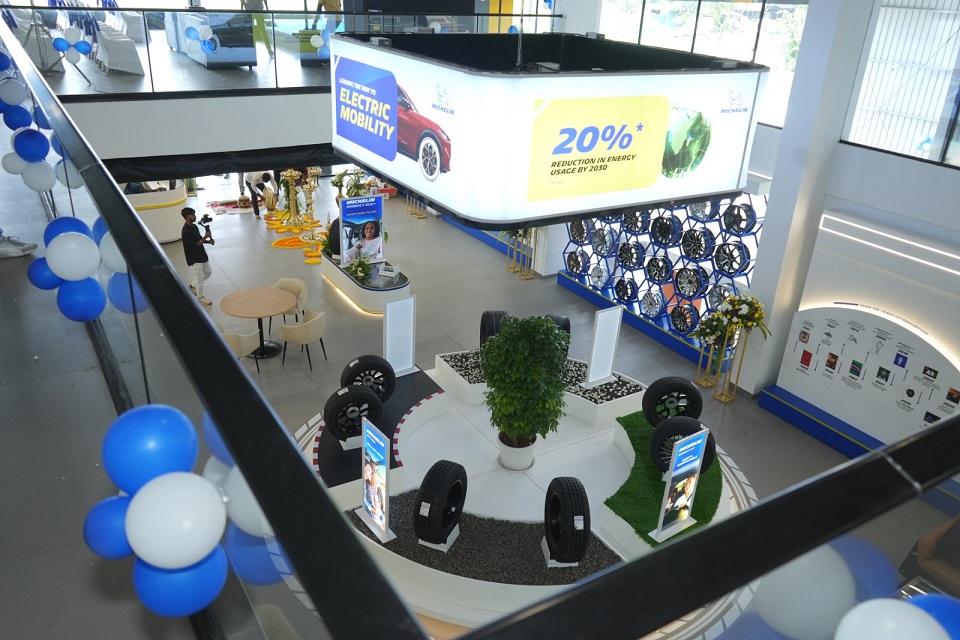 Together, these developments mark a decisive shift in how tyre brands engage customers. Tyre stores are increasingly functioning as lifestyle environments, designed for comfort, informed decision-making, personalisation, transparency and community. The industry is moving away from a product-first mindset to a customer-experience-led philosophy.
Together, these developments mark a decisive shift in how tyre brands engage customers. Tyre stores are increasingly functioning as lifestyle environments, designed for comfort, informed decision-making, personalisation, transparency and community. The industry is moving away from a product-first mindset to a customer-experience-led philosophy.
As premium cars, SUVs and EVs become mainstream, and as younger motorists prioritise digital empowerment and ambience, tyre retailers are aligning with these new expectations. India’s tyre makers are building a retail landscape where experiential engagement, technology integration, service breadth and emotional connection define long-term brand success.
For an industry long anchored in grease, metal and functionality, the transformation is profound. Tyre retail in India is no longer just about fitment; it is becoming a premium mobility experience, curated for a generation that demands clarity, comfort and an elevated relationship with every aspect of vehicle ownership.
Kumho Tire To Build First European Plant In Poland With $587mln Investment
- By TT News
- December 05, 2025
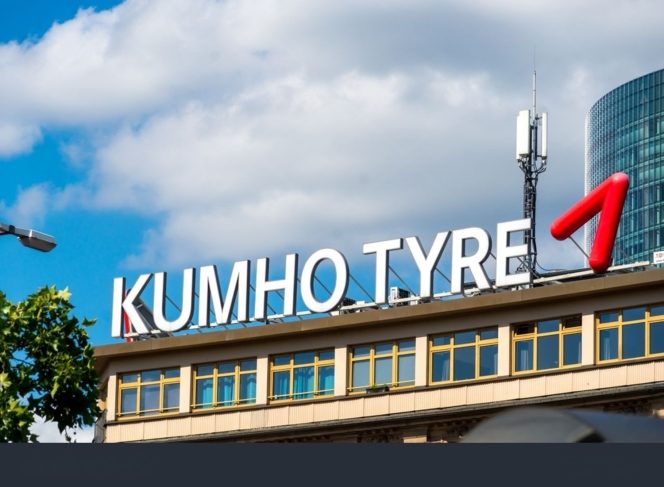
Kumho Tire will establish its first European manufacturing plant in Poland’s Opole region as the South Korean company seeks to expand its position in one of the world’s largest tyre markets.
The group said the factory is scheduled to begin initial operations in August 2028, subject to investment approval and licensing. Kumho plans to produce 6m units annually in the first phase and expand capacity in line with demand. Total planned investment is USD 587 million.
Kumho has spent recent years evaluating multiple European locations, including Poland, based on logistics, labour availability, infrastructure, market access and investment incentives. The company said Opole was selected as the optimal site owing to supply-chain stability within the EU and the region’s supportive operating conditions.
Europe accounts for about a quarter of global tyre consumption and is home to several major automotive manufacturers. The region represented roughly 26.6 per cent of Kumho’s sales last year. The company has previously relied on exports to serve European customers, which it said limited its competitiveness in the market.
The new plant is intended to strengthen Kumho’s ability to supply high-value-added products, including high-performance and larger-diameter tyres, to European vehicle makers.
Kumho currently operates eight production sites across South Korea, China, the US and Vietnam, with combined annual output of 65 millionunits. The Polish plant will complete what the company describes as a production network spanning Asia, Europe and North America.
Jung Il-taek, Kumho Tire’s Chief Executive, said: “The European market occupies a very important strategic position in the global tire industry,” adding that “Kumho Tire will go beyond simple exports and dramatically enhance premium brand value by strengthening quality and service competitiveness through local European production and supply.”
Tyre Stewardship Australia Appoints David Fraser As Chair As David Spear Steps Down
- By TT News
- December 04, 2025
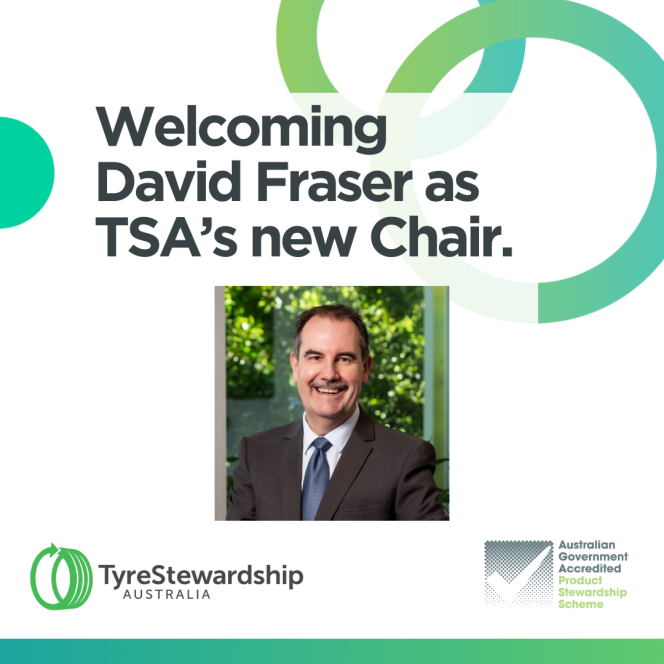
Tyre Stewardship Australia has appointed David Fraser as its new chair, succeeding David Spear after nine years in the role during a period of regulatory and industry change in the country’s tyre-recycling sector.
Spear’s departure closes what the organisation described as a challenging yet incredibly important chapter for its efforts to advance circular outcomes for Australia’s end-of-life tyres. TSA, an industry body backed by government and sector participants, oversees the national stewardship scheme and promotes recycling and re-use pathways for waste tyres, an area facing increasing scrutiny under Australia’s environmental and product-stewardship policies.
In a statement, TSA said it “thank[s] him for his unwavering support and dedication to driving circular outcomes for Australia’s end-of-life tyres”.
Fraser, a TSA director since 2023, brings experience in governance and compliance. He joins at a time when Australian states are tightening environmental standards and seeking to reduce landfill through higher recycling targets. TSA said Fraser has “deep understanding of our strategy, our challenges and the opportunities ahead”.
The organisation added: “We look forward to his leadership as TSA enters its next chapter.”
TSA also expressed appreciation to Spear “for your contribution and support of our mission”, and welcomed Fraser, saying it is “excited and ready for what lies ahead”.


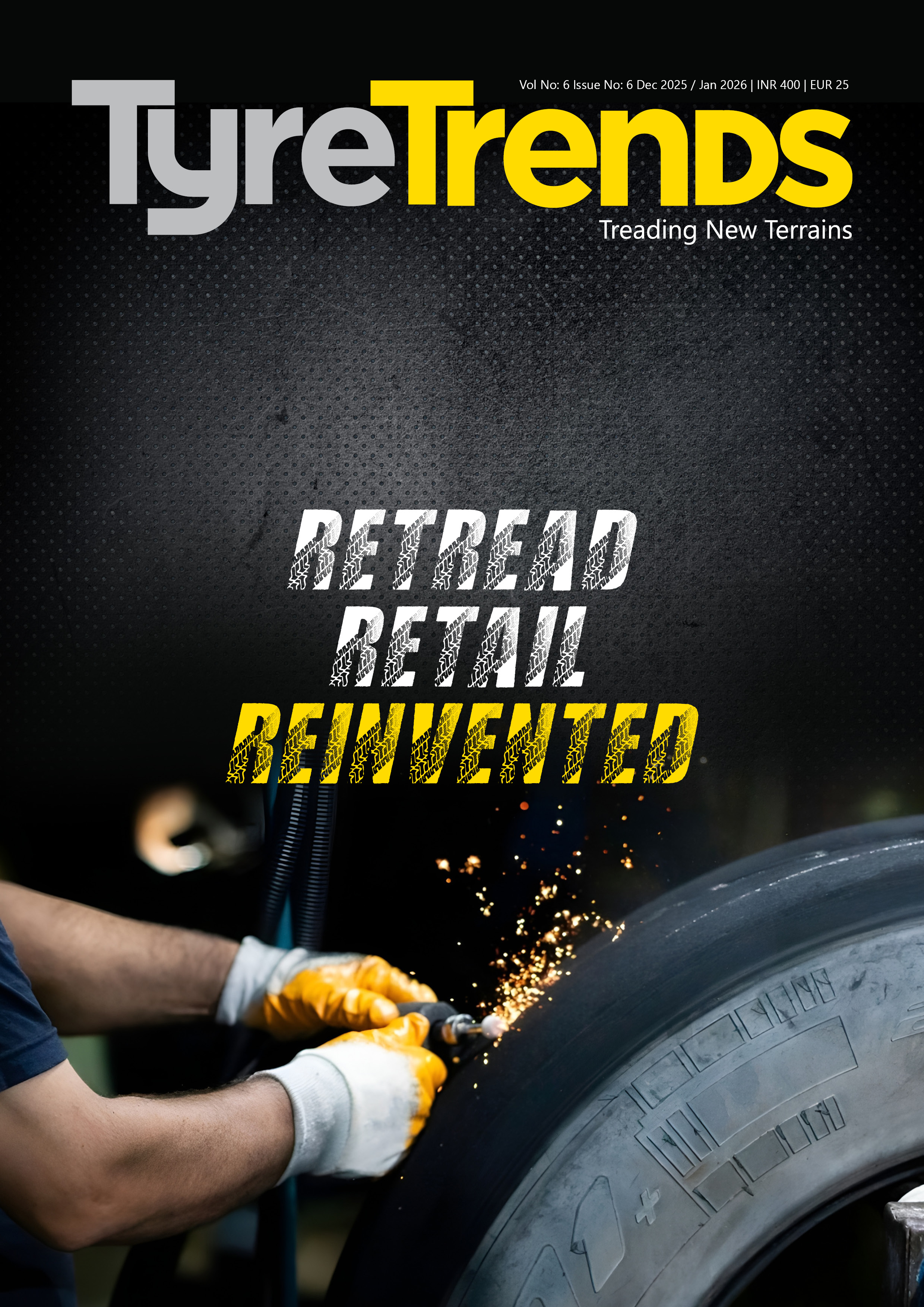

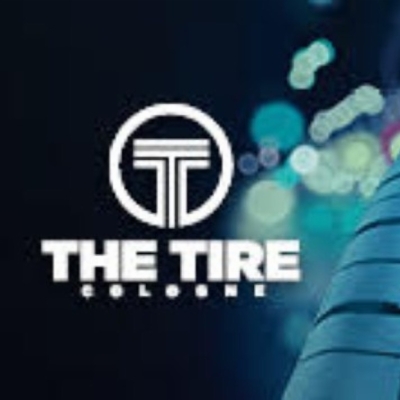


Comments (0)
ADD COMMENT